Recently, Ola Kallenius, Chairman of the Board of Management of Mercedes-Benz Group AG, revealed to investors during the company’s Q1 earnings call that the steer-by-wire (SBW) system will be launched next year in an unnamed model, making Mercedes-Benz the first German automaker to mass-produce this technology. Speaking about the system, he said, “Steer-by-wire is a completely transformative innovation.” This system replaces traditional mechanical linkages with electronic signals transmitted via cables or wires to control steering. In other words, the car’s steering no longer requires any physical connection to the steering gear; instead, it relies on electronic commands sent to the steering wheel mechanism.
On May 13, NIO announced that the steer-by-wire technology used in its ET9 had just received UN ECE E-Mark certification, making NIO the only automaker in the world to secure dual certification for steer-by-wire technology in both China and Europe.
According to a report by Allied Market Research, the steer-by-wire market is projected to grow from $2.7 billion in 2021 to $5.8 billion by 2031. Zion Market Research estimates that the U.S. steering systems market will reach $48.21 billion by 2032.
In fact, the concept of steer-by-wire was first proposed by TRW in the 1950s, replacing mechanical connections between the steering wheel and wheels with control signals—though it remained unproduced for decades. In 1992, Saab introduced a prototype, the Saab 9000, which used a joystick for steering, marking the first automotive attempt at steer-by-wire. In 2013, Infiniti debuted the technology in its Q50L model, but due to regulatory constraints, it retained a mechanical backup steering column, failing to achieve full decoupling. Moreover, the system was recalled within two years due to safety concerns.
The first mass-produced vehicle with a true steer-by-wire system was Tesla’s Cybertruck, launched in December 2023. NIO’s ET9, released in December 2024, also adopted the technology. In March this year, Toyota announced that the new Lexus RZ, set to launch in Europe this autumn, would feature the system.
While Mercedes has yet to officially confirm which model will debut its steer-by-wire system, its flagship all-electric SUV, the EQS, is scheduled for a facelift next year. Mercedes developed its steer-by-wire system in collaboration with ZF, which will also supply rear-axle steering components for the models equipped with the technology. Earlier this year, Philippe Gasnier, Senior Vice President of ZF’s Engineering and Chassis Solutions division, stated in an interview that steer-by-wire systems are expected to achieve a global adoption rate of 2% to 5% by 2030. ZF also supplied the steer-by-wire system for NIO’s flagship sedan, the ET9.
However, ZF is not the only company investing in steer-by-wire. In 2023, Robert Bosch announced plans to introduce the technology in the coming years. The German supplier is collaborating with startup Arnold NextG, known for its expertise in electronic control systems and joystick-based steering conversions. Other suppliers working on steer-by-wire systems include Nexteer Automotive, Schaeffler, and REE Automotive.
01 Advantages of steer-by-wire
Automotive steering systems have evolved from mechanical steering systems to hydraulic power steering systems, electro-hydraulic power steering systems, and electric power steering systems, and are now advancing toward steer-by-wire systems.
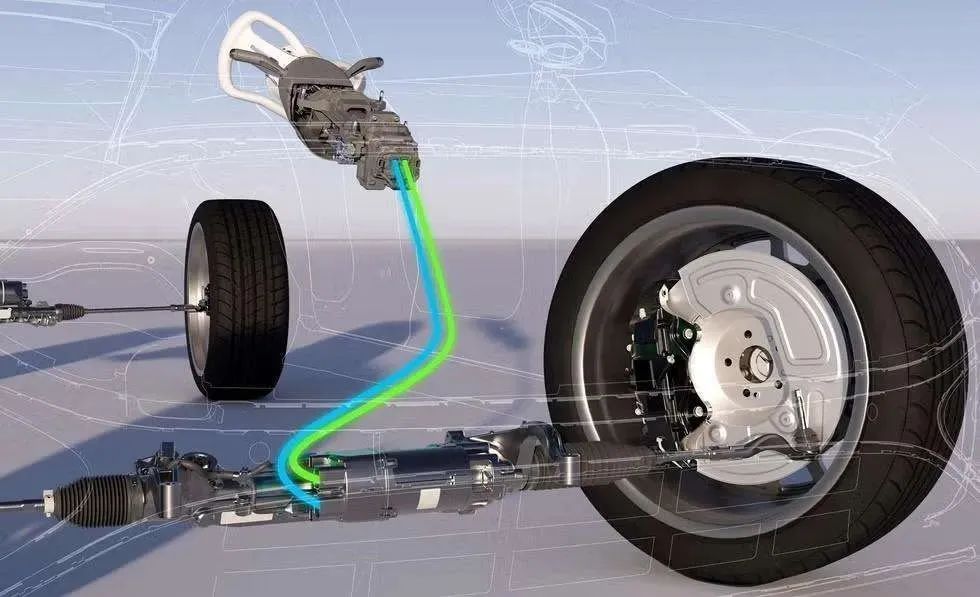
Steer-by-wire is a fully power-assisted steering system that eliminates the mechanical linkage between the steering wheel and the wheels, replacing it with electronic signal transmission and control. This achieves complete decoupling between steering wheel rotation and wheel movement, thereby unlocking new possibilities for safety, handling, and comfort.
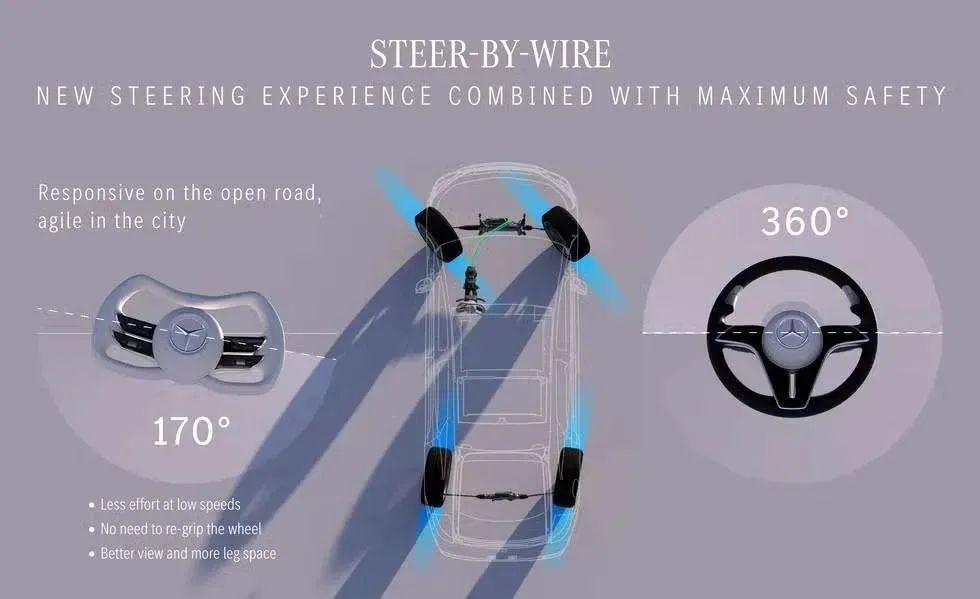
First, the number of components that could endanger occupants in an accident is reduced, and secondly, it provides new options for future airbag placement. In the past, drivers might fail to react promptly to hazards due to improper steering operation, whereas steer-by-wire systems can act directly on the wheels without being affected by the actual rotation of the steering wheel.
Second, vehicles equipped with steer-by-wire systems can dynamically adjust the steering ratio. At low speeds (such as in parking lots or narrow curves), steering becomes more responsive, allowing significant directional changes with slight wheel turns. On highways, steering wheel inputs result in only minor wheel angle adjustments for smoother control, further enhancing directional stability and lateral agility.
With steer-by-wire systems, steering wheels can be made flatter, providing more spacious interiors and better driver visibility. When integrated with future conditional and highly automated driving systems, drivers may enjoy more comfortable seating postures.
Additionally, steer-by-wire systems can perfectly define a brand’s or specific model’s steering characteristics through software alone, while keeping the mechanical structure unchanged. For example, converting from left-hand drive to right-hand drive only requires installing the steering actuator on the opposite side of the cockpit.
02 Doubts and Challenges
Every great innovation has its skeptics. Let’s look at some doubts about steer-by-wire development:
The most common criticism is the loss of road feel. Traditional steering systems provide tactile feedback, allowing drivers to sense the road and vehicle response to changing conditions. Steer-by-wire systems may sometimes lack this tactile feedback, making it harder for drivers to predict and respond to potential hazards. In fact, steer-by-wire systems are specifically designed with resistance actuators to simulate vibrations, bridging the gap between traditional mechanical and digital connections without sacrificing driving pleasure.
Another concern is that adding electronic components increases the possibility of failure – this is where redundant systems come into play. Multiple backup layers ensure that if one system fails, another can take over seamlessly.
The high initial cost of steer-by-wire is another reason for industry skepticism. However, as with any new technology, prices are likely to decrease as adoption becomes more widespread and economies of scale are achieved.
Some worry that steer-by-wire could be vulnerable to hacking and remote malicious control of vehicles. In fact, developers have implemented advanced encryption and multiple security layers to ensure the driver remains in control. Additionally, continuous OTA updates address vulnerabilities.
Yu Bin, chief engineer of chassis steer-by-wire at Chongqing Changan Automobile Software Technology, believes the current challenges of steer-by-wire can be summarized at two levels: technology and cost.
Technologically, since the operational stability of steer-by-wire directly affects vehicle handling safety and autonomous driving system reliability, it demands extremely high safety requirements. This necessitates redundant backups including multiple sensor backups, dual/triple ECU architectures, dual power supplies, dual chips, as well as fault diagnosis and isolation functions. While some components have already been developed and implemented, the reliability and robustness of certain functions still require verification.
In terms of cost, the consequence of multiple redundant components is increased costs. For new component development, either the new generation product must offer higher value at the same price as the previous generation, or the same value at a lower price. Without good cost-performance ratio, market acceptance would be impossible.
Steer-by-wire systems are just beginning to enter mass production. Both drivers and automakers can benefit from this new development – from urban compact cars to sports cars to luxury SUVs, all market segments will benefit.
03 Real-world driving experiences from different automakers
Let’s take a look at how the steer-by-wire systems from various automakers – both in production and nearing production – perform during test drives.
3.1 Mercedes-Benz
Mercedes-Benz’s newly developed steer-by-wire system has completed over 1 million kilometers of testing on dynamometers. Additionally, its validation process on proving grounds and public roads has accumulated a similar mileage. Given its high safety standards, Mercedes employs a redundant system architecture, complemented by high-precision sensors and high-performance control units. This ensures uninterrupted steering capability, with a secondary system taking over in case of failure.
Markus Schäfer, Mercedes-Benz’s Chief Technology Officer for Development and Procurement, states: “This technology delivers a unique customer experience that extends far beyond steering itself.” The automaker claims the system responds faster than conventional steering, potentially improving handling dynamics and safety during emergency maneuvers. Its variable steering ratio automatically adapts to driving conditions—increasing responsiveness at low speeds (e.g., for parking) while reducing sensitivity at highway speeds for stability.
In new Mercedes models, a yoke-style flat-bottom steering wheel (similar to Tesla’s Model S Plaid) requires just 340 degrees of rotation from lock to lock, eliminating the need for hand-over-hand maneuvers. The compact design liberates legroom, enhances cockpit spaciousness, improves display visibility, and eases entry/exit.
Steer-by-wire also simplifies production: the distinction between left- and right-hand-drive vehicles vanishes—only the steering actuator’s position needs adjustment, avoiding complex modifications to the engine bay. Mercedes asserts the system enhances vehicle stability and lateral agility, allowing drivers to personalize steering feel, especially in models with rear-axle steering (like the EQS).
Another advantage is reduced vibration transfer; road shocks traditionally transmitted through the steering wheel are minimized. While Mercedes touts this as a benefit, driving enthusiasts who prioritize tactile feedback may disagree.
The decoupled mechanical linkage enables a novel feature: during charging, drivers can use the steering wheel like a game controller to play racing simulators without turning the wheels, transforming charging sessions into leisure time.
3.2 Lexus
Lexus’s steer-by-wire system has reportedly been in development for 10 years. Although it was first showcased during the initial RZ launch in 2023, the first production model to feature this technology—the new Lexus RZ electric vehicle—was unveiled in March this year, making it Europe’s first vehicle with steer-by-wire capability.
According to overseas test-drive feedback, the “virtual steering force” tuning of the steer-by-wire system already approaches the tactile feel of traditional mechanical steering. With high-precision sensors and dual-redundant ECUs, the system achieves a 0.01-second response time, coupled with a variable steering ratio (6:1 to 14:1 dynamic adjustment). During prototype testing, it demonstrated precise “point-and-go” handling. Test drivers noted that the RZ’s steering wheel offers approximately ±150 degrees of rotation, with the steering ratio dynamically adapting to speed and steering angle. This allows the wheel to turn from center to full lock in less than half a rotation, eliminating the need for hand-over-hand or “shuffle steering” maneuvers. Drivers can keep their hands firmly at the 9-and-3 positions at all times, making the operation intuitive and easy to adapt to.
Initially, the minimalist steering wheel design might unsettle first-time users. However, this unease fades after navigating the first corner, as the system delivers natural and accurate wheel positioning with minimal adjustment required. At very low speeds (e.g., parking), slight steering inputs result in significant wheel angle changes, simplifying tight maneuvers.
During high-speed or aggressive driving, new users may need brief acclimatization. While low-speed precision is exceptional—almost raising concerns about potential oversteer at higher speeds—the system initially exhibits mild understeer as drivers cautiously explore its limits. With confidence, the car responds predictably, adjusting to precise angles as intended. Paired with linear power delivery, the RZ remains composed even on track during spirited cornering.
Notably, engineers retained a “road feedback algorithm” in the new RZ, simulating authentic road feel through steering wheel vibrations. Drivers can even adjust feedback intensity based on preference. While replacing mechanical feedback with artificial simulation may seem counterintuitive, Lexus argues this approach better filters sensory inputs—preserving desired feedback (e.g., cornering forces) while suppressing unwanted vibrations (e.g., tire chatter or rough pavement).
Unlike some systems, Lexus’s steer-by-wire omits a mechanical backup column, relying instead on electronic redundancy: duplicated hardware/software and an additional backup battery beneath the center console. If the primary system fails, the secondary system ensures the RZ maintains steering control for a safe stop.
3.3 NIO
NIO’s flagship sedan ET9 is China’s first mass-produced vehicle equipped with steer-by-wire technology. The system mainly comes from ZF Group, which provides ET9 with the most advanced steering wheel actuator, redundant steering gear actuator and related software.
According to test drives by Auto Business Review journalists, the first impressive feature was the square steering wheel – it only requires slightly more than half a turn (240° rotation from center to full lock on one side) to reach full steering angle, eliminating the need for arm-crossing maneuvers even during sharp turns. The journalists initially thought it would take considerable time to adapt to this significantly different steering wheel, but surprisingly adjusted to it very quickly, finding the driving experience exceptionally smooth.
Secondly, its steering ratio can be adjusted within a 14:1 to 6:1 range. In actual driving experience, the synchronization between steering wheel and wheels is excellent, meeting all steering needs from low-speed parking to high-speed driving. At low speeds, such as during U-turns or parking, the steering wheel only needs minimal rotation, making maneuvers particularly convenient and enjoyable.
Most remarkably, drivers often completely forget they’re operating a luxury sedan with a wheelbase exceeding 3.2 meters and length over 5.3 meters. Even when navigating tight corners that test the inner wheel’s turning radius, the ET9 can complete the turn in one smooth maneuver.
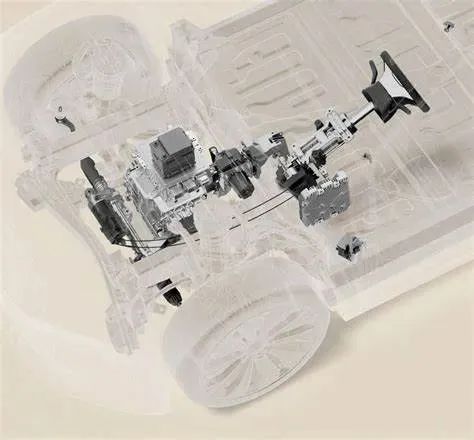
After getting accustomed to the direct and agile steering response of steer-by-wire, switching back to traditional steering often reveals an initial understeer – the vehicle’s turn-in response becomes noticeably less than expected.
During mountain road driving, the ET9’s steer-by-wire system delivers solid, precise feedback through the steering wheel, allowing drivers to accurately control steering angles. The response is instantaneous – the moment steering input is given, the front wheels react immediately, carving smoothly into the apex.
At medium-to-high speeds, the system’s road vibration feedback can be adjusted, optimizing NVH performance for better road noise filtration. This creates an ultra-quiet, luxurious cabin space effectively isolated from external disturbances.
During high-speed lane changes, the reduced steering ratio enables precise lane adjustments with minimal wheel movement, eliminating any sense of lag during overtaking while enhancing stability and comfort.
An additional benefit: the ET9 comes preloaded with racing games. When playing these games, the steering wheel’s movements don’t affect the actual tires, delivering an immersive gaming experience. According to NIO, removing the mechanical steering connection allows the steer-by-wire system to filter over 80% of road vibrations from reaching the steering wheel.
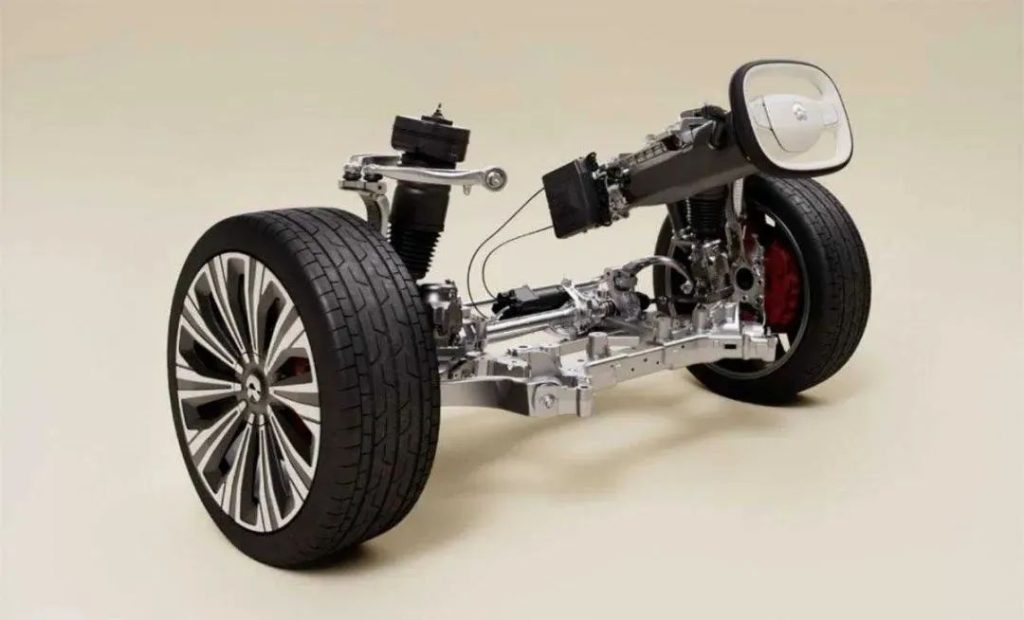
The steer-by-wire system in the ET9 offers an impressive 153mm telescoping range for the steering wheel, providing drivers with greater seat adjustment flexibility. NIO states that the ET9’s steer-by-wire system incorporates a redundant design featuring dual power supplies, dual communication channels, dual hardware components, and dual software systems. The company emphasizes that despite the absence of mechanical linkage between the steering wheel and wheels, the steer-by-wire system demonstrates 2.2 times higher reliability compared to traditional electric power steering systems.
3.4 Tesla
Tesla has patented its latest steer-by-wire system featuring a notable characteristic: redundancy. The system eliminates the need for backup mechanical steering by relying on zone-isolated redundant components, ensuring unaffected performance even during component failures.
The Cybertruck achieves full steering lock with just 340° of wheel rotation – less than one full turn. This is possible because the relationship between driver input and front wheel angle is software-defined, offering infinite possibilities. For parallel parking, drivers simply twist their wrist and nudge the wheel left while keeping both hands planted, whereas traditional steering would require aggressive wheel maneuvers.
Many test drivers initially doubted whether variable-ratio, computer-controlled steering could match the intuitiveness of mechanical systems. Yet most skeptics converted to steer-by-wire believers before even leaving the parking lot.
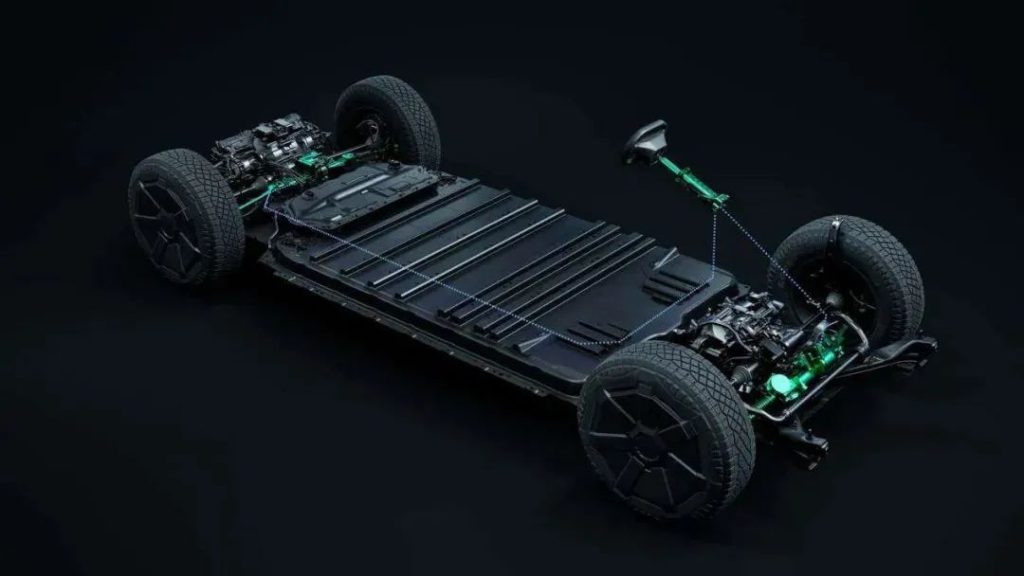
According to test drivers’ experience, it only takes three steering maneuvers for hands and brain to adapt to Cybertruck’s handling. The first attempt usually involves turning the wheel too much/too abruptly, as you expect Tesla to steer like other vehicles on the road. The second attempt tends to be too gentle, requiring slight adjustment to increase steering input appropriately. After the third turn, drivers become accustomed to the steering feel – at this point, driving with steer-by-wire feels as natural as riding a bicycle.
Tesla leverages this flexibility to give Cybertruck the quickest steering response of any production vehicle during parking, while maintaining relaxed yet precise steering on highways for smooth, stable control. The steering ratio adjusts from 5:1 (parking) to 12:1 (highway), making Cybertruck’s steering response at its slowest speeds faster than a Porsche 911 at top speed – a stark contrast to the sluggish, clumsy steering typical of large pickup trucks. The steer-by-wire system also enables up to 10° of rear-wheel steering, reducing Tesla’s turning radius at low speeds while enhancing high-speed stability.



